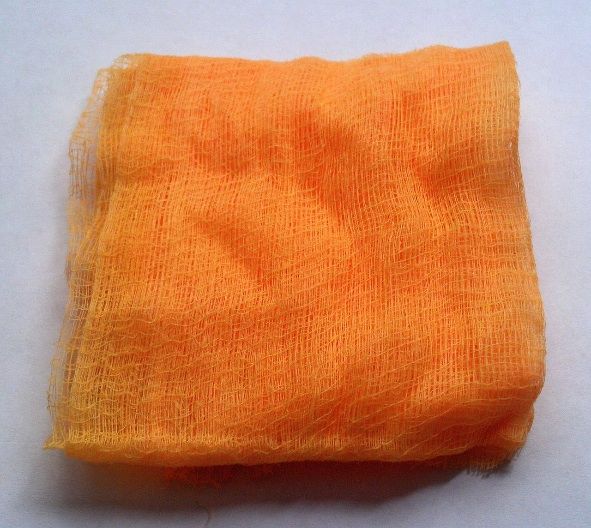Description
Tack cloth (tack rag; tac cloth) is a specialized type of wiping
cloth that is treated with a tacky material. It is designed to
remove loose particles of dust, dirt and lint that would
contaminate a surface that is to be painted, coated, laminated,
photo-etched, or otherwise finished.
The tack component is typically a kind of resinous material, often
a petroleum derivative. The resin system may be solvent-based,
water-based, or (more commonly in North America) a hot-melt.
Different tack treatment materials, formulations and systems
present different advantages or disadvantages. Concerns with
different tack treatments may be seen in the tendencies of some to
dry-out or to leave residues from free oils or evaporating
solvents, or with liabilities due to content of hazardous air
pollutants (HAP's), or in health risk from volatile organic
components (VOC's), and in materials that can chemically interfere
with paints, 'etc.' Common misnomers for tack treatments are
varnish, lacquer, beeswax or other references that do not describe
the actual materials in modern commercial tack cloths. Adjuncts may
be incorporated into the tack treatments, such as anti-static
additives, fire retardants, dyes or other performance-enhancing
materials.
Overall tack performance is actually a combination of independent
qualities such as adhesion, cohesion, wet tack (quick-stick) and
other well-defined adhesive related properties.[1] Each of these
can be manipulated to optimize performance in different types of
applications and conditions.[2]
The cloth component is most commonly a cotton gauze textile, but
the grade and quality can vary greatly.[3] Typical gauze
specifications are in weaves of between *9 (commodity) to *4 or
more (commercial/professional) yarns per square inch, with the
cloth weights, wiping properties and overall cost varying
accordingly. Gauze may be bleached and scoured (like medical
quality) or unbleached quality that contains more contaminants. A
standard size of the cotton gauze varieties is *8 in. × *6 in. in
North America (other standards are found in other countries, such
as *0 cm × *0 cm).[citation needed] Other textiles used in tack
cloths are made from continuous filament (non-fibrous) synthetic
yarns to eliminate linting or from various non-woven fabrics that
can reduce cost. It is important to consider that the textile type,
style, grade, quality and size are the greatest factors in tack
cloth cost, and that these variables can differ greatly among tack
cloth brands and product designs.
